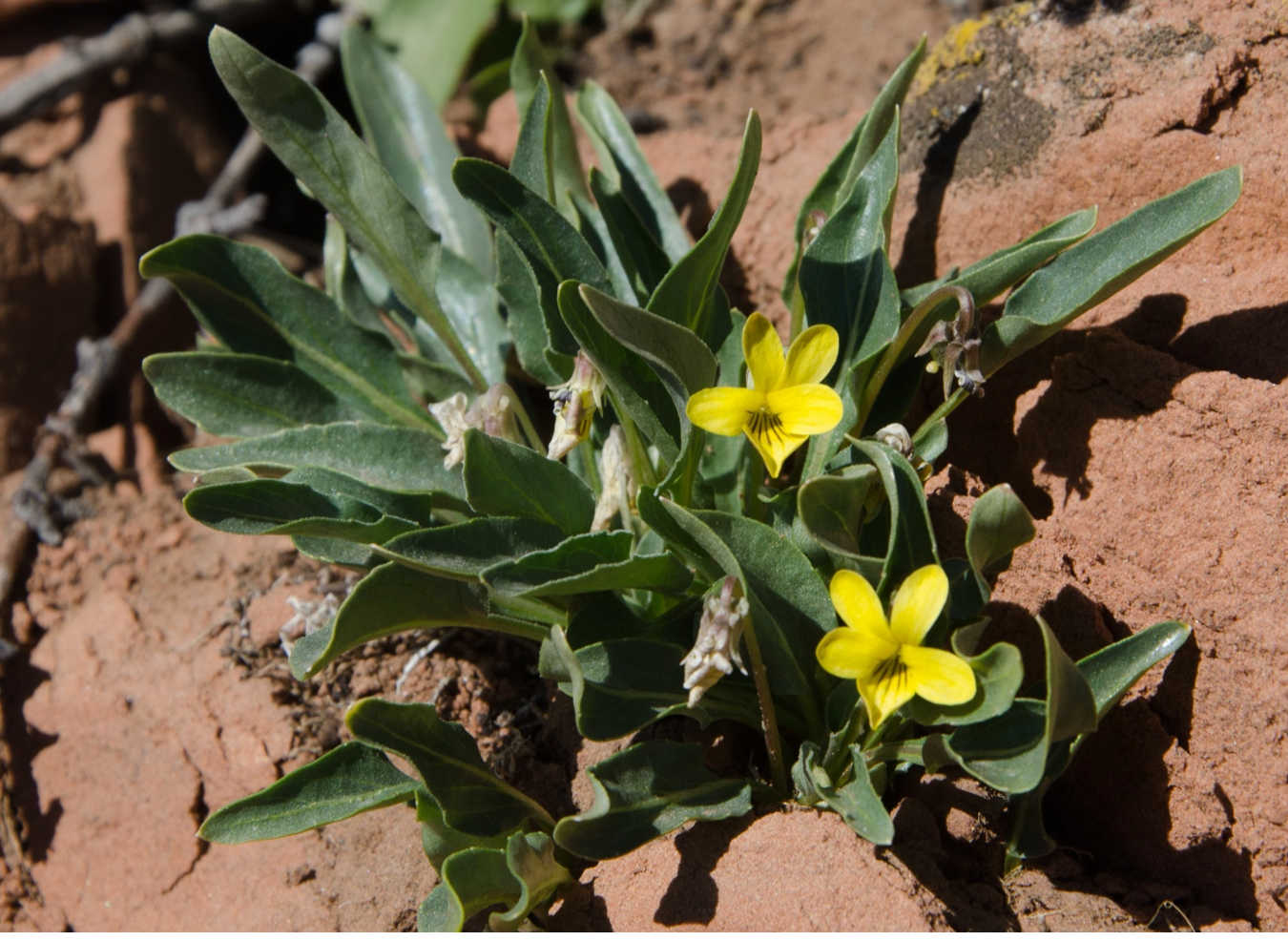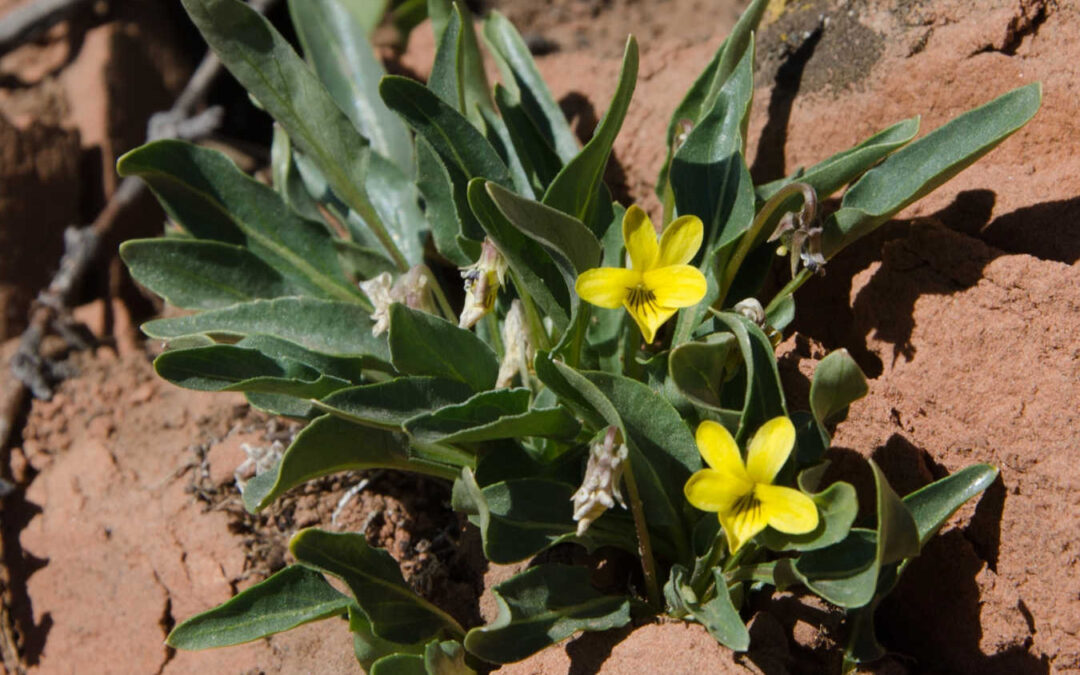By Paul Alaback, Professor Emeritus of Ecology, University of Montana
How can early spring wildflowers produce seeds when it is so cold and pollinators are scarce?
I have been following the parade of flowers that emerge each spring for many years. It is usually quite predictable which species will come out first. Some plants flower so early that they routinely encounter freezing or subfreezing temperatures. As it turns out many early flowering species here in the foothills or plains around the Front Range may also occur high in alpine or subalpine habitats. Early flowering plants need to tolerate both freezing and warm sunny conditions, sometimes in the same day. Like, for example, last week! Only a few species are able to pull off tolerating weather that changes so rapidly from hot to cold. In these variable conditions pollinators may be uncommon, and certainly unpredictable in their ability to pollinate the first wildflowers of the season. We know that some butterflies, for example the western white, overwinter as adults and can fly if there is a warm day, even in the winter. Bumble bees are famous for their “pre warming exercise” to raise body temperature before flying off to flowers in alpine habitats on cold days. With unpredictable early season pollinators there must be a lot of flowers that do not get regularly pollinated. So how do these flowers manage to produce any seeds?

Nuttall’s violet Viola nuttallii at Devils Backbone open space, west of Loveland
Closed fertile flowers
An interesting example of adaptations to fickle spring conditions in our native wildflowers is provided by the violets. This past week, I finally saw some early yellow violets (Viola nuttallii) coming into flower, despite all the persistent snow we have had here in Boulder County up until just a week ago. Violets, including our yellow violet, have perhaps the ultimate bet hedging strategy. They produce two kinds of flowers. The first, with which we are most familiar, is bright yellow, showy, and can attract a variety of flying insects, in particular small bees and flies. But these flowers don’t last long, so they may not get pollinated. Violets can also produce what are called cleistogamous, or closed, flowers. These are usually found under the leaves and have no colorful petals, but they do produce pollen to fertilize the female flowers and hopefully to produce seeds. Even in years like this one they can produce seeds even if the weather may not be too cooperative. It is quite a clever strategy and may help explain why, in many parts of the temperate world, violets are a very successful early wildflower.
Producing seed without pollination
Another strategy you see a lot in the sunflower family is the ability to produce fertile seeds without pollination. This is called apomixis. Many dandelions are one of the first spring flowers and they do this. Even one of our most showy early native flowers, the Easter Daisy (Townsendia) can do this as well. Like the violets apomixis is not the only way they produce seeds. These plants can have regular flowers and produce seeds when fertilized, via pollination.

Easter or ground daisy, Townsendia hookerii north of Boulder
Speaking of Townsendia species, every spring we seem to debate how to identify them since they can be so difficult to sort out. Some populations are genetically identical with unique characteristics because they are isolated and arose from apomixis. Other apomictic populations may have different characters, and in still other populations, you can find variation from a mixture of apomictic and sexually reproducing plants. No wonder they are so hard to pin down!
Another thing to think about is why do these plants bother with sex and pollinators if they can just produce viable seeds very efficiently on their own? The short answer is this is yet another ecological and evolutionary trade-off. The populations of apomictic, or self-pollinated flowers, have little genetic variation. Those that produce seeds with the help of pollinators delivering pollen from different plants have much more genetic variation. In habitats with a stable climate and low disturbance this might work out ok. But as we all know, especially here in Colorado, change is the norm. Those sexually reproducing plants have offspring with more genetic variation and the possibility of being better adapted to changing conditions than their apomictic cousins.
As you enjoy our spring display of early flowers, think about the marvel it is that these flowers can produce such lovely colors so early in the year and even successfully reproduce despite all these challenges posed by crazy spring Colorado weather.
Photos by author
Paul Alaback
Professor Emeritus of Ecology
University of Montana
palaback@gmail.com
Further reading:
Violets
https://wildseedproject.net/2016/03/violet-species-violaceae/
Closed flowers (cleistogamous)
https://www.sciencedirect.com/topics/agricultural-and-biological-sciences/cleistogamy
https://en.wikipedia.org/wiki/Cleistogamy
Apomixis
https://en.wikipedia.org/wiki/Apomixis
Ross A. Bicknell, Anna M. Koltunow. 2004. Understanding Apomixis: Recent Advances and Remaining Conundrums. The Plant Cell, Volume 16, Issue suppl_1, June 2004, Pages S228–S245,
https://doi.org/10.1105/tpc.017921

